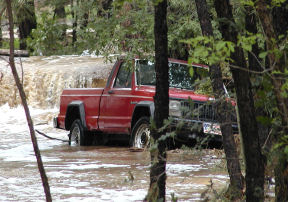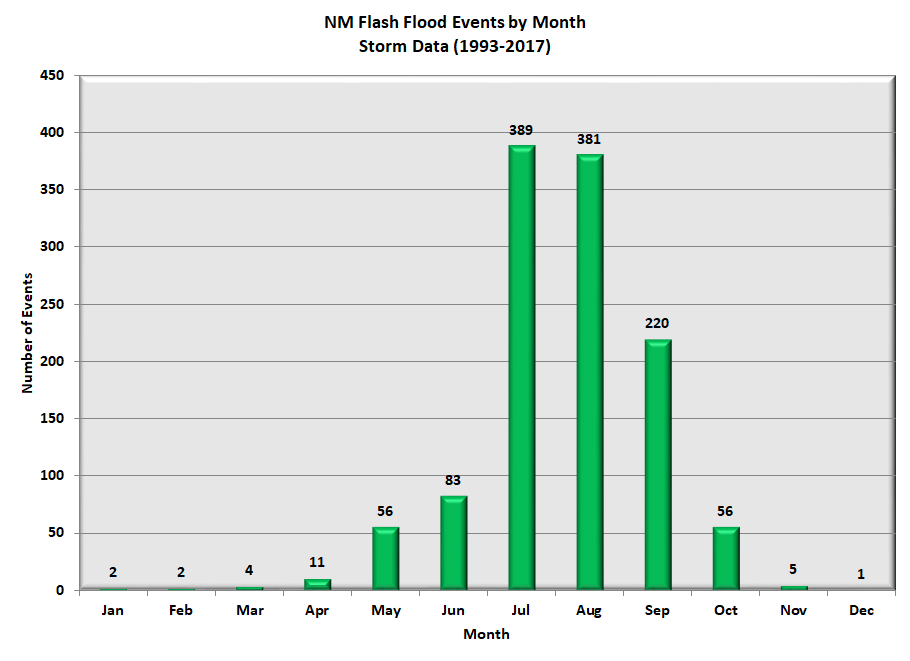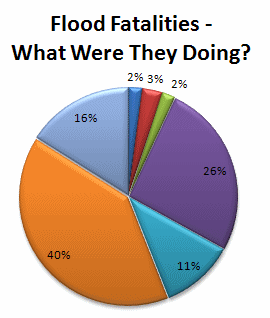Hazard Awareness
|
|
Flash floods also result from slow-moving thunderstorms or recurring thunderstorms that move over the same area for an extended period. Flash floods usually occur within six hours of heavy rainfall and are normally the most dangerous of floods. |
||||||||||||
|
Flash floods can occur with little or no warning, move at very fast speeds and can reach a peak in a few minutes. They can roll rocks, tear out trees, sweep away cars and trucks, and destroy buildings and bridges. Rapidly rising water can reach heights of 30 feet or more. Flash flood-producing rains can also trigger catastrophic mudslides. You will not always have a warning that these deadly, sudden floods are coming. Most flood deaths are due to flash floods, and most fatalities occur in vehicles. |
 |
|||||||||||
What Actions Can I Take?
|
||||||||||||
|
During the monsoon season (June 15 - September 30), be sure to monitor NOAA Weather Radio or your local media. The National Weather Service issues a FLASH FLOOD WATCH to alert the residents to the possibility of a flood emergency. During the watch, residents should:
A FLASH FLOOD WARNING is issued by the National Weather Service when a flash flood is occurring or is imminent on certain streams or areas. When the warning is given:
"Head for higher ground and stay away from flood waters!" Additional Flash Flood Safety Guidelines:
|
||||||||||||
Statistics for New Mexico
|
||||||||||||
|
Flash floods in New Mexico can occur in any month, but the threat increases in May and June, or during our severe weather season. A more dramatic increase occurs during Monsoon Season, especially in the months of July and August (see the graph to the right). As the frequency of flash floods increases, so does the distribution of the events. During May and June, most events occur along and east of the central mountains. Most thunderstorms across the west during these months are dry, producing little rain. By July and August, all areas across the state can experience flash flooding (see the images below). |
 |
|||||||||||
|
|
||||||||||||
 |
Since 1959, 65 New Mexicans have lost their lives in flash floods. This chart depicts the circumstances during the flood. For 9 of the fatalities, details regarding the incident were not available. For the remaining 55 fatalities, 66 percent (45 fatalities) occurred in a car.
|
|||||||||||
Additional Information
|
||||||||||||
|
Statistics for New Mexico, and for the entire country, continue to show that most flash flood fatalities occur in a car. Never drive your car into water crossing the road. Read more about the NWS Safety Campaign "Turn Around Don't Drown." |
||||||||||||